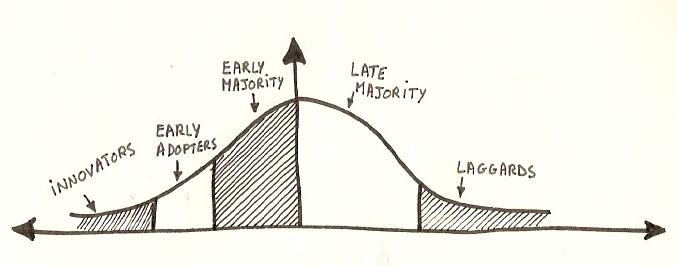
Digital blindness is increasingly common.
The medical risks are growing but blindness to digital theory and practice are also a concern.
Too often the creators and shapers of our online lives assume the prerequisite digital literacies are in place but assumptions are not enough. Sit in any social learning space for an hour and it becomes clear how many are unable to maximise a screen or name and save a file. Anyone supporting learnng and teaching will have similar stories to tell.
Higher education appears blind to the need for developing individual digital literacies and confidence.
Why is this?
For centuries, universities have been about knowledge acquisition. Students as buckets. Turn on the knowledge tap. Fill them up. A consequence is approaches to digital accessibility have tended to follow similar transmission models. The reality is simply putting information out there isn’t enough to change hearts and minds.
Check out the OU Innovating Pedagogies series and the NMC Horizon reports then ask yourself where do staff go to learn to be so digitally confident?

The 21st century has seen a massive shift from teacher-teaching to student-learning, but places, people and practice remain unchanged. Students arrive expecting to be lectured, PowerPoint slides are overloaded. Delivery speeds up towards the end to fit everything in. We’ve all done it. It’s easier to use tried and tested methods than step into new territory.
When it comes to the digital agenda, the map is still being drawn. We need to rethink and repurpose.
Children become literate from an early age. They learn from schools and families but when it comes to digital literacies, which are arguably more broader and complex than ‘read and write’, adults adopt DIY approaches. In higher education digital literacies exist on multiple levels. Core keyboard and screen literacies, the use of mobile devices and app culture, cloud computing, digital pedagogies and the digital fingerprints belonging to individual subject disciplines. Everything has a digital dimension.
All the elements of Maslow have digital equivalents.

A digital hierarchy begins with connectivity. Who hasn’t felt panic when realising your mobile phone’s at home or there’s no wifi in the remote cottage you’ve booked for a week.
Digital data has become our dominant currency. Everything done online creates data footprints. Citizens need to work and function effectively in digital environments. Government and NHS have shifted to Digital-first while higher education is dependent on digital administration and virtual learning environments. The data this produces is increasingly being used to inform policy ad practice.
Relationships are developed, maintained, enhanced and ended through social media and apps for communication, collaboration and file sharing. Our online practice creates digital presence. Whether these digital images are true or false the evidence suggest the ways we perform identity online are integral to mental wealth and wellbeing.
At the top of Maslow’s Hierarchy is Self-Actualization; becoming the best possible version of ourselves and realising potential. This is about self-fulfillment, which relates to the images we present. I’d suggest solely analogue means are no longer sufficient for living, learning and working in the digital age.

I’ve been in higher education since the turn of the century and watched society become more and more dependent on digital literacies. Blindness to this is both metaphor and physical reality.
Digital is a massive agenda and by refusing to address it from universal, joined up perspectives, the sector has failed its staff across the board.
As a consequence, universities are failing students.
My concern is that digital blindness is infectious.
Becoming digital is an issue for higher education on so many levels. Teaching and learning, administration, employability and internationalisation while inclusive and accessible practice are essential elements for quality assurance via programme approval and validation – the list could go on and on…
There’s a scattering of diverse groups and practices addressing digital inclusion, all excellent in their own way but too often isolated from each other.
While writing this I’ve been listening to the Jisc Webinar on the EU Accessibility Directive. https://www.jisc.ac.uk/training/new-regulations-new-risks-online-briefing
Details can be found in this blog post asking how much real difference the regulations will make.
It was affirming to see so many people on the Jisc webinar who care about creating accessible digital futures. I pledged to complete a post called ‘Borrow my Eyes’ which is about my own experiences with inaccessible online content.
Watch this space – it will be following soon…











 What’s a digital shift?
What’s a digital shift?








 Digital shifts happen for many reasons. External pressures can lead to
Digital shifts happen for many reasons. External pressures can lead to 





























![By [1], Fair use, https://en.wikipedia.org/w/index.php?curid=2040293](https://digitalacademicblog.files.wordpress.com/2016/08/magritte_thesonofman.jpg?w=863)









